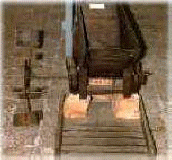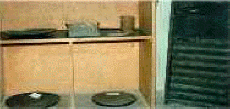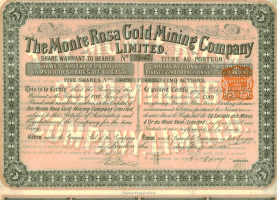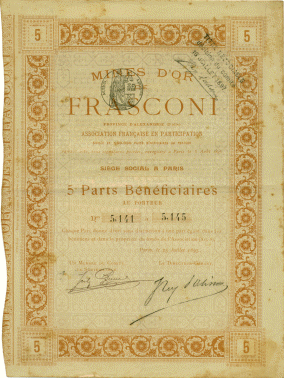 The Italian Gold History Museum has been constituted by doctor Joseph Pipino to Predosa in April of 1987. The collection was initiated in the years' 70, during the explorations and historical searches conducted by the geologist on the ancient gold mines of the Gorzente Valley and on the alluvial gold deposits of the low Orba Valley. The collected materials had served, in 1981, for a first permanent exposure to Casalcermelli. Subsequently, extending the searches to the whole Po River plane and to other parts of Italy, numerous other testimonies were retrieved regarding all the zones object of ancient gold activities and it was necessary to find an ampler center, found into the Social Center of Predosa, in which the Museum hosted for about 10 years. Made him unavailable the Predosa side for administrative necessity, to the beginnings of 1997 the Museum was provisionally transferred to Silvano d’Orba, where however it developed an intense activity for four years. During 2001 the Town Council of Lerma gave part of the ex elementary school building, in which the museum was transferred, together with the historical files and the specialized library.
The Italian Gold History Museum has been constituted by doctor Joseph Pipino to Predosa in April of 1987. The collection was initiated in the years' 70, during the explorations and historical searches conducted by the geologist on the ancient gold mines of the Gorzente Valley and on the alluvial gold deposits of the low Orba Valley. The collected materials had served, in 1981, for a first permanent exposure to Casalcermelli. Subsequently, extending the searches to the whole Po River plane and to other parts of Italy, numerous other testimonies were retrieved regarding all the zones object of ancient gold activities and it was necessary to find an ampler center, found into the Social Center of Predosa, in which the Museum hosted for about 10 years. Made him unavailable the Predosa side for administrative necessity, to the beginnings of 1997 the Museum was provisionally transferred to Silvano d’Orba, where however it developed an intense activity for four years. During 2001 the Town Council of Lerma gave part of the ex elementary school building, in which the museum was transferred, together with the historical files and the specialized library.
Since the day of the opening the Museum has developed an intense cultural activity, collaborating with important public and private corporations: has in particular collaborated with the Turin, Genoa And Perugia Universities for Thesis of Degree, with the Turn Polytechnic for expositions, lectures and publications, with the Madrid Polytechnic for studies on mining history, with the Geneva and Pisa Universities for practical courses of gold exploration and panning. Also collaborated with the State Forest School, with Archaeological Superintendence in Turin, with the Capanne di Marcarolo Natural Park and with numerous cultural and technical associations. It always developed intense didactic activity for the schools coming from various regions, organized lectures and prepared expositions in various parts of Italy. Collaborated to the publication of articles and books on geology and mining history. Everything this without any economic public contributions.
In the Museum it is illustrated the history of the Italian gold mines and placers, with documents going from the XVI century to our days, ancient and recent topographical papers, a rich bibliographic collection, brochures, newspapers, incisions, photos, tools and objects of use. Don't miss samples of gold bearing minerals, primary native gold, as well as gold dust picked in many rivers. Also there are numerous stock titles of the mining companies that between XIX and XX centuries were interested of Italy, Italian Switzerland and Colonies gold mines and placers.
Regarding the instrumental part related to the gold digging in the Gorzente Valley, it is of particular interest a piece of the gauge line installed in 1888 and retrieved in one of the ancient galleries, utensils of excavation and millstones of different age: among these one of great diameter done in granite, rock that is absent in the zone and that, as it is deduced by 1885’s publication, was imported by the Mount Rosa.
Mount Rosa mines originate directly other testimonies, among which small amalgamation mills used to the beginning of 1900,s in the Anzasca Valley, mine lamps, utensils and a rich documentation regarding the activities taken place during the centuries in the same valley and in the near Sesia and Aosta valleys
For other zones of Italy we have the firsts samples of quartz with epithermal gold, picked up by the same doctor Pipino in southern Tuscany and in Lazio, and the testimonies of his firsts searches in Trentino, Liguria, Calabria, Sicily and Sardinia.
As regards the ancient activity of gold recovery from the alluvial sediments, we have some archaeological finds coming from the Bessa Roman Gold Mine (aurifodinae), various types of pans and sluice boxes in wood used in the first decades of the 1900’s in the Orba, Orco, Elvo, Sesia and Ticino rivers, together with other complementary tools. We also have parts of the plant built at the end of the years' 1930 to Portanova of Casalcermelli for the separation and the recovery of the gold and the others heavy minerals contents in the Orba river sands.
In the Museum it is also possible to follow, through apparent, clippings of newspapers and photos, the recent development of the goldpanning hobby. The Museum is in fact the siege of the local Orba Valley Historical-Naturalistic Association, and of the Goldpanning Italian Federation, no-profit associations that have the purpose the knowledge of the Italian gold rivers with spirit of ecological guardianship of the territory and safeguard of the secular goldpanning activities.
The individual access to the Museum is free in the opening time (Tuesday and Friday afternoon), while driven visits of group, in other days, can be arranged phoning the n. 339/2656342. It is also possible possible to participate in practical panning demonstrations in the structures predisposed in the garden of the Museum, to pan in the near auriferous streams, to visit the Gorzente and Piota valley rests of the aurifodinaes and of the 1800’s gold mines. The Museum is also available for demonstrations and temporary exposures, particularly in the zones of ancient mining and auriferous traditions.




